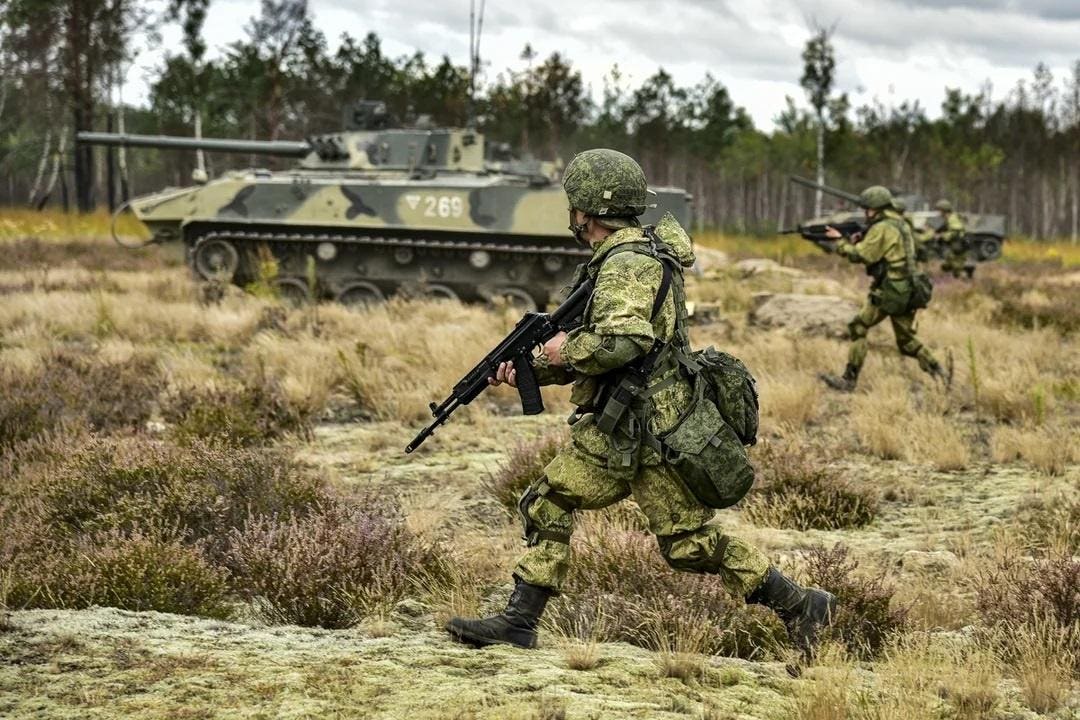Ukrainian troops last week apparently crossed the outermost anti-tank trench in the first line of fortifications comprising the vaunted Surovikin Line stretching across Russian-occupied southern Ukraine.
It’s possible the Ukrainians were from a small reconnaissance unit. It’s equally possible they retreated after coming under fire from Russian troops firing anti-personnel grenades.
But the Ukrainian probe, if that’s what it was, northwest of occupied Verbove in southern Ukraine’s Zaporizhzhia Oblast on Wednesday is further evidence that Ukraine’s long-anticipated southern counteroffensive is intensifying, three months after the initial Ukrainian assaults along two major axes in Zaporizhzhia and neighboring Donetsk Oblasts.
The Ukrainians in the past couple of weeks have liberated two key towns: Robotyne, a mile west of Verbove, as well as Urozhaine, a Russian strongpoint in the Mokri Yaly River Valley 60 miles to the east.
Russian commanders are spooked. So spooked that, a week ago, they redeployed the 76th Guards Air Assault Division—their last major operational reserve—from eastern Ukraine to the south. Elements of the powerful 76th GAAD arrived in Tokmak, 12 miles south of Robotyne, and promptly began shelling Ukrainian forces in Robotyne.
But how? The 76th GAAD was in eastern Ukraine for a reason. What changed to convince the Kremlin it safely could redeploy the division, which includes three front-line regiments each with a couple of thousand paratroopers plus T-90 and T-72 tanks?
Tom Cooper, an author and expert on the Russian military, has a theory. According to Cooper, the 76th GAAD is free to redeploy from the east to the south because the Kremlin lately has been feeling more confident about the durability of its positions in and around Bakhmut.
Recall that, at the same time Ukrainian brigades launched their counteroffensive in the south, a small Ukrainian force attacked in the east, as well. Led by a pair of aggressive army assault brigades, the 3rd and 5th, Kyiv’s eastern forces crossed the Donbas Canal, a key defensive position for the Russians, and advanced a couple of miles along Bakhmut’s flanks.
The eastern attacks served an important purpose for the southern attacks. “The ZSU offensive in the Bakhmut area of the last few months has tied two Russian VDV divisions,” Cooper wrote, using the native acronyms for Ukrainian forces (ZSU) and Russian airborne forces (VDV).
With the 96th and 108th Guards Airborne Divisions pinned in place, only the 76th GAAD could function as a “fire brigade” in the east, moving swiftly to plug gaps in Russian lines.
But then, a couple of weeks ago, the Ukrainian assault around Bakhmut slowed—seemingly a lot. Data from NASA fire-detecting satellites shows hot spots around Bakhmut peaking around Aug. 9 then subsiding, a possible indication that the fighting in the area significantly has ebbed.
After that happened, the 96th and 108th Guards Airborne Divisions apparently were free to shift their own regiments without risking Bakhmut. That rendered the 76th GAAD redundant as an operational reserve in the east—and freed up the division to shore up Russian defenses in the south.
“The Keystone Cops in Moscow found themselves free to start redeploying a third VDV division to southern Zaporizhzhia,” is how Cooper colorfully put it.
Ukraine’s eastern offensive indirectly sustained its southern offensive—by pinning down Russia’s reserves. Commanders in Kyiv obviously have understood this from the beginning. But that begs the question: why did they apparently slow the eastern offensive?
It’s possible the assault brigades leading the attack paused in order to rest, refit and make good losses from months of hard fighting. It likewise is possible the Ukrainian armed forces don’t have enough reserves of their own to replace the assault brigades on the front line, even temporarily.
The shifting balance of forces along the 600-mile front line of Russia’s 19-month-old wider war on Ukraine underscores the intensity of the fighting. Both sides always are just a few exhausted brigades or regiments from ceding momentum to an eager enemy.
Right now, Ukraine’s forces have the momentum—in the south. But if you believe Cooper, Russia’s forces might have enough momentum of their own, in the east, to move a division between regions without that move destabilizing entire sectors.
Read the full article here





